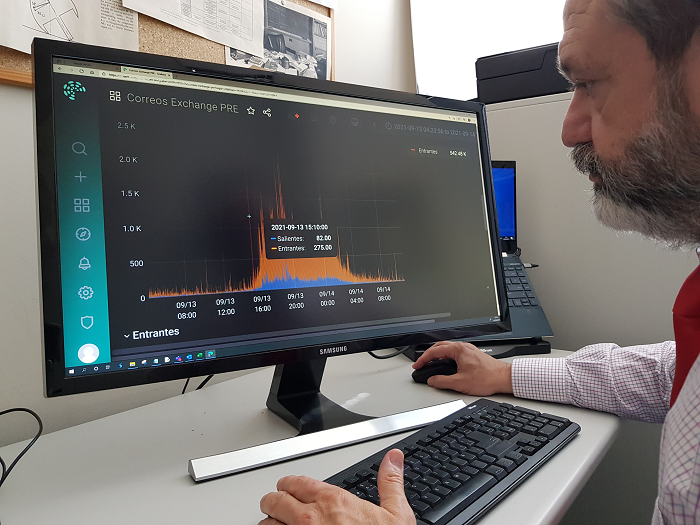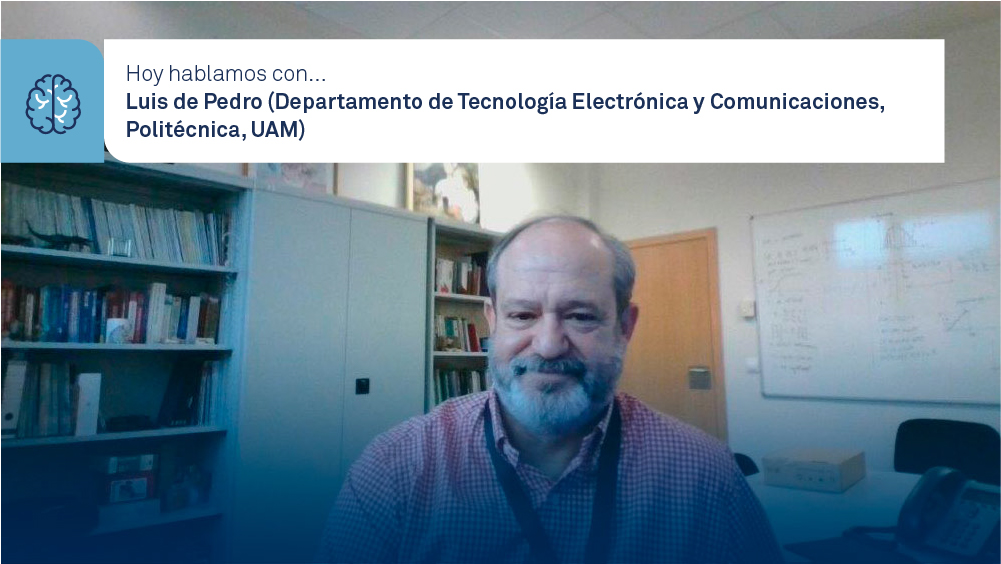Luis de Pedro Sánchez is a professor at the Department of Electronic Technologies and Communications of the Escuela Politécnica Superior at Universidad Autónoma de Madrid (UAM). In the past, ha was a consultant for Hewlett-Packard and DxC, and he is a specialist in digital transformation applied in construction industry.
Behind his 35 years of experience lies the kind of wisdom that points you to the right direction. In his case, the path to digitalization. “Ten years ago, we founded a start-up supported by UAM, Universidad de Navarra and other organizations. We wanted to group all our open research lines and put them at the service of the market”, he explains.
“We are experts on Internet-related topics, communications, Internet of Things (IoT) and we develop monitoring projects in TIC environments”, stresses de Pedro.
How do you apply IoT to construction?
On the one hand, you can use it to control the accesses to a building and its safety, to manage anything “basic house” related that makes a self-sufficient home with solar, wind, or thermic energy. “These technologies require components, many of which are computer-based, and they need to be managed, even if only to check whether they are working properly”, explains professor de Pedro.
There are also Smart management systems. “You can apply machine learning too. By applying IoT to a building, you can extract data about anything that goes on there: temperature, consumption… and then optimize it and make right consumption choices”.
Luis de Pedro’s team develops its monitoring activity in Spain, Mexico, Guatemala… “Ideally, you should centralize IoT, so that you can optimize the information to predict break downs, so that it triggers an alarm and you can plan ahead”, says de Pedro.

The only thing slowing down this trend are the steep initial investments requirements, which are still an obstacle, but its possible thanks to automatization of accesses or home security monitorization. For instance, if a disabled or dependent person has a fall, the system can detect that and set off an alarm. Truth be told, the investment is paid off in 5 to 10 years. At first, it’s expensive, but it balances out with saving on energy costs. Besides, it improves the quality of life of many people and it favors environmental sustainability.
Right now, IoT is used in industrial settings, oil pipelines, manufacturing sites, etc. Potentially autonomous homes are on their way, and they might not even depend on external energy sources. Currently, most monitoring enquiries come from data processing centers.
“At Naudit, we have our own highly adaptable technology products. We create custom-built development solutions and we develop the monitoring and management system for our client companies”, explains professor de Pedro.
“Our highest demand in construction is communication network monitoring. That is, all the Internet in buildings. Telecommunications service providers need to know what service quality they provide. In office buildings it’s easier, because they tend to have just one Internet provider, but it’s more complicated in apartment complexes with several units”, affirms professor de Pedro.
The next technologic wave will bring “passive houses”, with green energy components and renewable energy systems, that will generate processable data. For example, it will allow us to anticipate what power generation system should kick in depending on whether it’s sunny or windy, and to store this energy to use it afterwards, when consumption is higher and production lower.
They have also developed apps for industrial vehicle fleets that monitor if the driving is adequate, check if the vehicle is broken down, whether it’s speeding, etc. “If a sensor is transmitting information, that information can be processed”, affirms Luis. These data facilitate companies’ decision-making processes.
